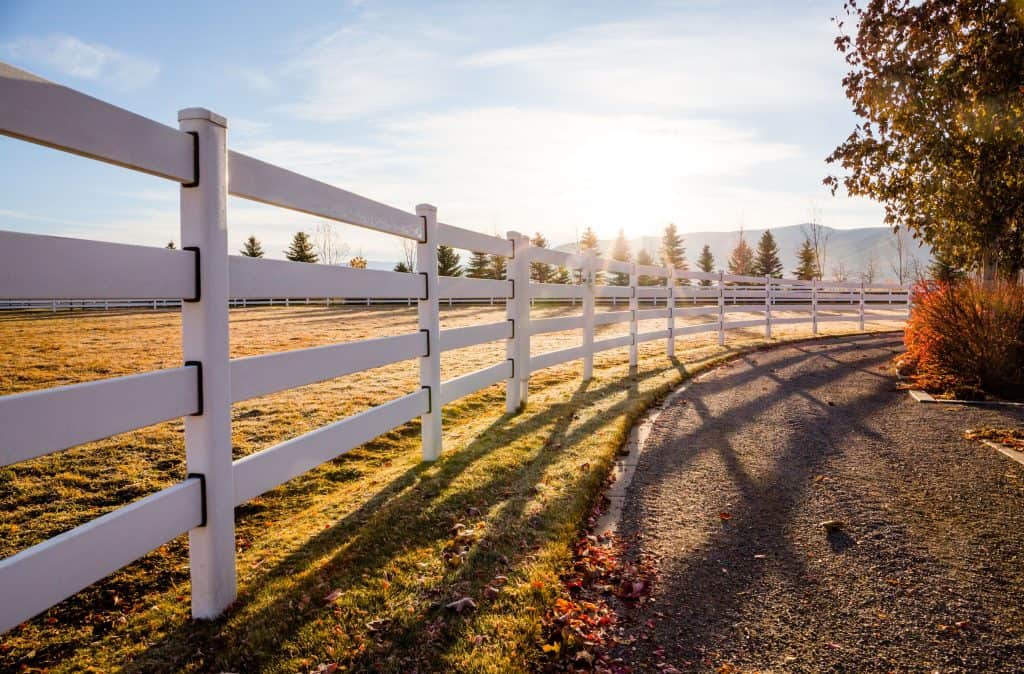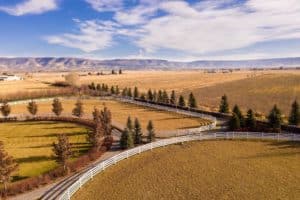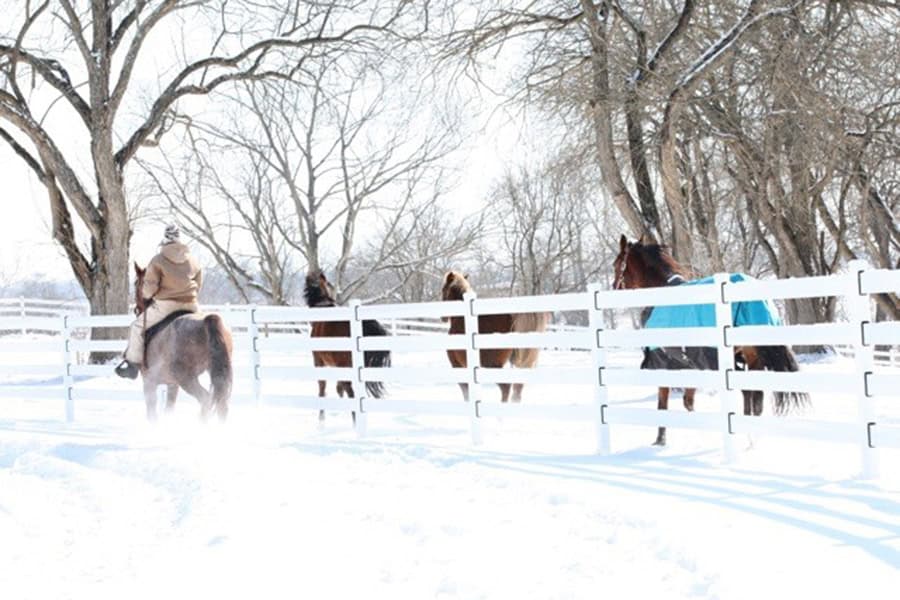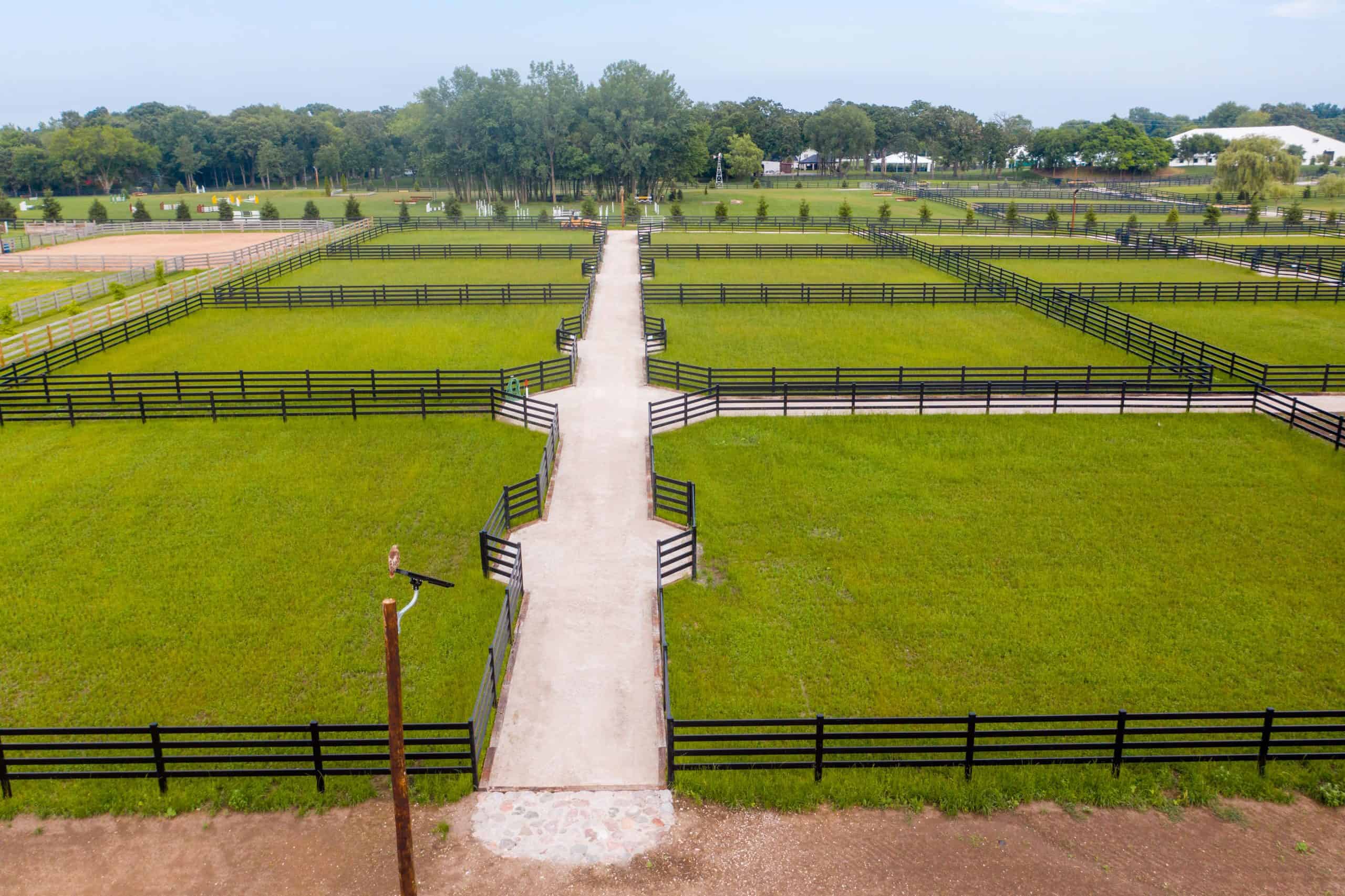When it comes to creating a safe and comfortable environment for your equine friends, choosing the right fencing is as important as selecting the perfect saddle. It’s not just about the initial installation—it’s about how your fence stands the test of time.
Each fencing material will have its own upfront investment, but that’s not the final cost. Some materials will require more heavy maintenance costs down the road, and others will need to be repaired and replaced sooner. All of these factors should go into your budgeting decisions when choosing a fence for your horses.
Whether you’re setting up a new paddock or thinking of upgrading your current fencing, we’ll help walk you through the options (and their associated long-term costs) to help you find the right solution for your horses and your pocket.
Understanding Fencing Maintenance Needs
Choosing the right horse fencing is more than just an aesthetic or immediate functional decision. It’s a long-term commitment to the safety and well-being of your horses, as well as to the overall upkeep of your property. Maintenance (an often overlooked aspect) plays a critical role in ensuring the longevity and effectiveness of your fence.
The maintenance requirements of horse fencing vary significantly depending on the material and construction. At the core, all fencing types need regular inspections to check for potential damage or wear. This includes looking for loose boards or wires, signs of rust or corrosion, stability of posts, and integrity of the fence line.
Besides inspections, different materials demand specific care:
- Wood fence requires painting or staining to protect against weather.
- Vinyl fence needs periodic cleaning and checks for any impact damage.
- Wire fence and electric fencing systems often require tension adjustments and checks for wire integrity or electrical faults.
Factors Affecting Maintenance

- Weather: The local climate plays a significant role in fencing maintenance. Extreme temperatures, humidity, rain, and snow can all impact different materials in unique ways. For instance, wood can warp or rot in very wet conditions, while metal might be prone to rust.
- Horse Behavior: The temperament and habits of your horses are significant. Some horses are more likely to chew on wood, lean on fences, or test boundaries, which can lead to more frequent repairs and checks.
- Vegetation and Wildlife: The presence of vegetation growing against the fence or wildlife interactions (like deer jumping over or rubbing against the fence) can also play a role in the frequency and type of maintenance needed.
- Installation Quality: A fence is only as good as its installation. Properly installed fencing can withstand environmental and animal-related stresses better and for longer periods, reducing the need for frequent repairs.
Material Breakdown and 10-Year Cost Analysis
When selecting horse fencing, understanding the long-term financial commitment is key. Let’s break down the costs and maintenance needs for different fencing materials over a decade.
Wood Fencing
- Initial Cost and Installation: Generally cost-effective, but prices vary based on wood type and design complexity.
- Yearly Maintenance: Regular painting or staining is needed to prevent weathering. Also, be prepared for periodic repairs like replacing broken or rotting boards.
- Long-Term Issues: Wood is prone to rotting and splintering and can be chewed by horses. These factors can lead to increased repair and replacement costs over time.
Vinyl Fencing
- Initial Cost and Installation: Typically more expensive than wood but offers a modern look with various design options.
- Maintenance Requirements: Vinyl requires cleaning and checks for cracks or breaks, especially in colder climates.
- Long-Term Durability: Resistant to weathering and rot, vinyl can maintain its appearance longer but may become brittle and less impact-resistant over time.
Wire Fencing
- Initial Cost and Installation: Often a budget-friendly option, particularly for large pastures.
- Maintenance: Requires regular checks to maintain tension, and rust prevention measures are necessary, especially in humid climates.
- Safety Considerations: While cost-effective, wire fencing can pose injury risks to horses if not properly installed or maintained.
Electric Fencing
- Initial Cost and Installation: Reasonably affordable, with the added cost of an energizer and other electrical components.
- Ongoing Costs: Includes electricity costs and regular maintenance to ensure wires are intact and the system is functioning correctly.
- Reliability and Safety Factors: Offers good containment but relies on a consistent power source and can be less visible, which might confuse or hurt horses.
Buckley Fence Steel Board

- Higher Initial Investment: While the upfront cost is higher, the quality and design justify the investment.
- Minimal Maintenance Needs: Engineered for durability with minimal upkeep, requiring rare cleaning and checks.
- Longevity and Durability Advantages: Resistant to weathering, horse impact, and doesn’t require repainting, making it a cost-effective option in the long run.
Maintenance Cost in Summary
While the actual dollar amount for your maintenance expenses will vary based on the size and distance of your fence, here’s a quick-and-easy tool as well as a list to reference when it comes to the lowest maintenance costs.
Buckley Fence Steel Board (Lowest Maintenance Costs)
Why Low Costs: Engineered for durability and longevity, the Steel Board requires minimal maintenance. Its high-quality materials resist weathering and horse impact, eliminating the need for frequent repairs or replacements.
Vinyl Fencing
Why Relatively Low Costs: Vinyl is resistant to weathering and requires only occasional cleaning. It doesn’t need painting or treatment against rot, but repair costs for cracks or breaks can add up over time.
Electric Fencing
Why Higher Costs: Although the initial setup is cost-effective, electric fencing incurs ongoing costs for electricity and requires regular maintenance to ensure the system’s integrity, leading to higher long-term maintenance expenses.
Wire Fencing
Why Higher Costs: Regular maintenance includes tightening wires and rust treatment. The potential for injury to horses may also necessitate more frequent repairs or adjustments, contributing to higher maintenance costs.
Wood Fencing (Highest Maintenance Costs)
Why High Costs: Wood fencing requires significant upkeep, including regular painting or staining to protect against weather, and repairs for rot, splintering, or horse damage. These factors make it the most maintenance-intensive and costly option over time.
The Buckley Fence Steel Board Advantage
When it comes to horse fencing, the Buckley Fence Steel Board offers the perfect blend of durability, aesthetics, and safety, making it a wise investment for discerning horse owners. While the initial cost might be higher compared to other materials, the long-term benefits and savings add up.
- Minimal Upkeep: The Steel Board fencing is designed to withstand the test of time with minimal maintenance. Its robust construction means fewer repairs and replacements, translating into significant savings over the years.
- Durability: Engineered to resist weathering, horse impact, and general wear and tear, these fences maintain their integrity and appearance for decades, a stark contrast to the more frequent replacements required for materials like wood or wire.
- Safety: The smooth edges and strong yet flexible design of the Steel Board fencing minimize the risk of injury, a common concern with wire or poorly maintained wood fences. Our patented design ensures that boards pop out under significant impact (rather than snap and break), a feature that can prevent serious injuries to horses while being easily reset by the owner.
- Aesthetic: A fence is more than a boundary—it’s a significant part of your property’s landscape. The sleek and elegant design of Buckley Fence Steel Board enhances the aesthetic appeal of any property, contributing to its overall value.
- Peace of Mind: Knowing your horses are safely contained in a fence that requires little to no maintenance brings peace of mind that is priceless. This assurance allows you to focus more on what you love—spending time with your horses.
Make the Right Long-Term Investment

The choice of horse fencing is not just a matter of present preferences but a long-term investment in both your property and the well-being of your horses. The initial cost is an important consideration, but the true value lies in assessing long-term maintenance and associated costs.
Investing wisely in quality fencing pays off not just in reduced maintenance and repair costs but also in the safety and aesthetic appeal it brings to your property. High-quality fencing like the Buckley Fence Steel Board stands as a testament to the adage, “You get what you pay for.” This investment promises peace of mind, safety for your horses, and a lasting beauty that enhances your property’s value.
Interested in exploring the best fencing option for your equine companions? Discover how our fencing solutions can elevate your horse property while providing a hassle-free, long-term fencing solution. Contact us today to get a free quote.




